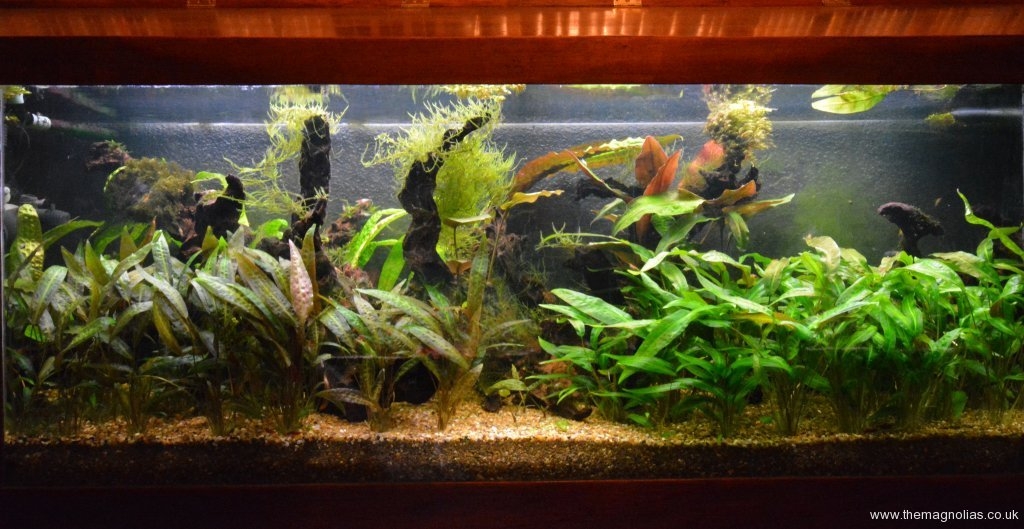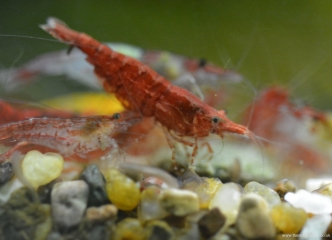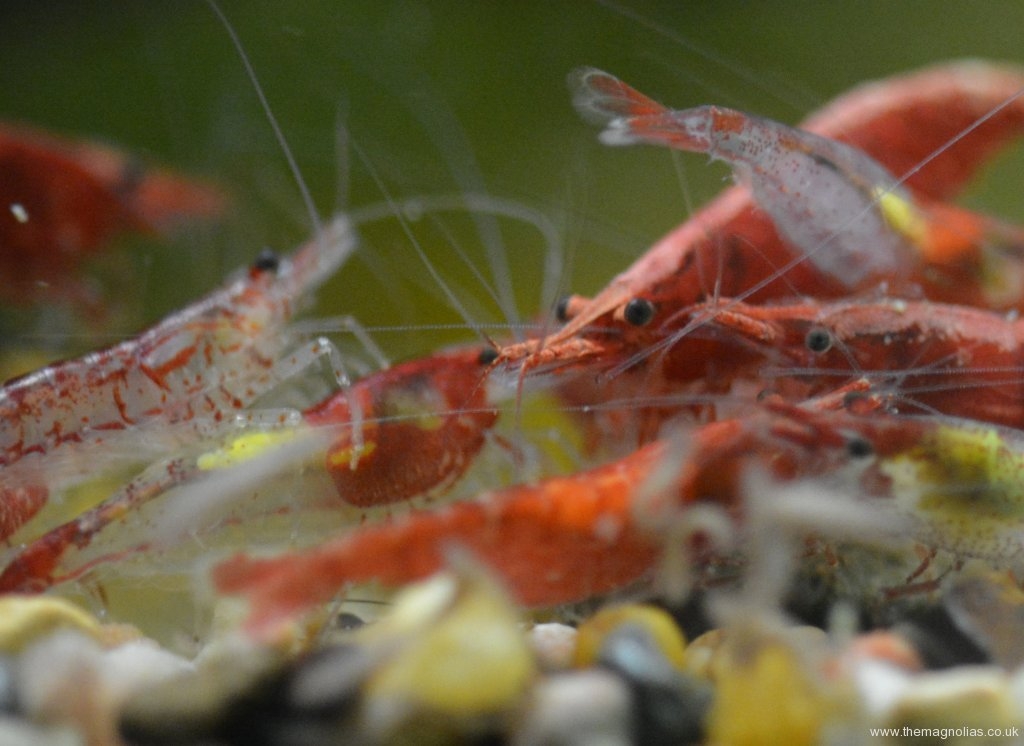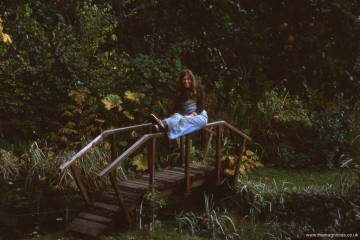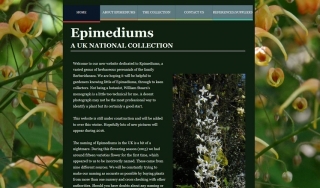Recently we have been trying to help our neighbour, Dave K. identify where badgers are getting into his garden, before ripping up his lawn. We have had our ‘Outback Cam’ in his garden for night after night, and still have not identified their point/s of entry. It is beginning to look as though they patrol his garden on most nights. However it is only now and again that the lawn is devastated. One of his other neighbours put up special’ badger proof’ fencing against a short length of Dave’s boundary. The You Tube videos here show a badger scaling the fencing, and then walking along the top of the trellis on our shared fence line, then probably dropping into our garden.
Author Archives: Roger Hammond
Epimedium Weekend 6th and 7th May 2017 From 10.00am to 4.00pm
We are having a Garden Open Weekend in order that interested gardeners can come and enjoy our National Collection of Epimediums.
Of course there will be many other plants to see including trees, shrubs and bamboos.
Unfortunately we do not have the space for raising many Epimedium plants for sale ourselves, but Dave Sisley of Straight Mile Nursery ( www.straightmilenursery.co.uk ) will be here with Epimediums for sale on both days. Over the last few years he has increased his range in stock to include some less common varieties.
Our address is;-
The Magnolias, 18 St John’s Avenue, Brentwood, Essex, CM14 5DF.
We look forward to meeting some of our website followers.
Magnolia Stump Removal
Today we have removed the root bowl of the Magnolia. We used a technique we have used on other fair sized tree stumps in the past.
This involves leaving around four foot of trunk on the root bowl, and sawing it in half lengthwise as low as possible. Then using wooden wedges and logs driven in with a sledge hammer the root bowl is split in two.We did this today without digging out the bowl by sawing the exposed half again lengthwise and splitting this in half again. We pulled each quarter away from the rest with a small hand winch.
The remaining half still attached to the ground was again sawn and split with wedges. The remaining quarters were winched out after a few roots were cut through with a root axe.Devastating Doris
We went down the garden just before lunch today, to find a much loved old ‘Tree Magnolia’ horizontal, a victim of yesterday’s ‘Storm Doris’.
This larger growing form of the ‘Willow Leaved Magnolia, Magnolia salicifolia var. arborea, was planted over forty years ago and was purchased from The Seville Garden. It had reached approximately thirty five feet in height and was carrying hundreds of flower buds.
Although there were no outward signs of ill health, the root-ball was not as good as the top of the tree would have indicated. It fell into a neighbour’s garden and flattened a 6ft high chain link fence breaking two of its straining wires and bending a post. Fortunately there was a only a small amount of collateral damage in our garden in the form of half of a four foot high Japanese Maple being smashed off. If the wind had been Northerly it could have fallen on our Mandarin Arbour, but wouldn’t have reached our new bridge.
With our son Paul and another neighbour, Dave’s help, Linda and I managed to clear next door’s garden, shred the smaller branches and cut up the trunk into splitable lengths.
The storm also blew a bird feeder out of a shrub just outside our kitchen window, spilling the seed on the path. A field mouse is pictured below, taking advantage of the sudden windfall, in broad daylight (2.00pm).
Aquarium Re-think
As in previous winters our gardening activities have been hampered by inclement weather, so work has been done to aquariums instead. They tend to get rather neglected in the other seasons of the year.
We decided to redo our most recently set up aquarium, which we had tried as a soft-water tank. This had been an almost complete failure as we had hoped to grow soft-water Cryptocoryne species and Crystal Red Shrimps. Probably, due to lack of water changes the shrimps never bred, and in the end the Crypts faded away. We were left with a few Pygmy Rasboras and small Tetras and a collection of mosses. The substrate we used was a man-made Japanese material believed to be made from paddy field clay and the tank had been filled with rain water from our shed roof. The original bog-wood features were reused and many of the attached mosses have re-grown well.
We stripped out everything and put an inch (2.5cm) of garden soil in the bottom followed by about three inches (7.5cm) of normal aquarium gravel. We then filled with Essex tap water.
Our good friend James had decided to close his tropical fish shop, Wayside Aquatics, after thirty years and to reduce the number of his own aquariums. He very generously donated several unusual Cryptocoryne species which are ok in hard-water. These were two clones of C. affinis plus hudoroi, cordata, usteriana ‘Red’ and pontederiifolia. A couple of weeks after planting up the aquarium he also gave us a good number of Neocaridina heteropoda shrimps in red, yellow, orange, blue and ‘Rili’ which have red at each end and clear in the middles. Mixing the varieties is undoing all the good work of selective breeding and the results of interbreeding may be a disaster, but we will see. I have recently counted over a hundred babies from about 1mm to 4mm long. We are only going to have Ottocinclus cat fish in this tank, as they are said to be baby shrimp safe.
New Oriental Style Bridge
In early summer 2015 we decided to de-silt our ‘bridge pond’ with a view to replacing the bridge, which was about forty years old. It had been built from second hand house timbers, bought from a demolition yard, and probably derived from buildings created before the advent of timber treatment. On completion we had treated it with brown Cuprinol. Over ten years ago, we did some repairs with some woodwork being replaced, and it was again painted with a wood preservative. By 2015 it was in a poor state and clearly needed major repairs or replacement.
We had hoped to build a new bridge in 2015 or even buy a proprietary one, but I was suffering from bad sciatica, no doubt exacerbated by the silt removal job, where Linda and I removed three and a half ton builder’s bags of heavy muddy material.
Towards the end of August this year, we decided to build a new bridge, with the encouragement and enthusiastic help of our son, Paul.
It took very little time to demolish the old bridge as it was quite rotten. If I had known how bad it was I wouldn’t have continued walking over it until the last moment.
Over the years I have photographed a number of oriental style bridges in gardens open to the public, including Abbotsbury Sub-tropical Gardens, Forde Abbey Gardens and Compton Acres. Using these pictures and online images from searching ‘oriental garden bridges’, I drew a fairly rough, A4 plan of what I thought might achieve an attractive result. We were to utilise the four iron bed-frame fixings from the old bridge and had decided on an arch bridge despite the difficulty in creating a pair of twelve foot long arches. I reckoned six inch by an inch and a half thick would be adequately strong and could be created from three pieces per arch. These could be cut from three 3 metre scaffold boards. In the end we went for slightly thicker and more expensive, treated timber in 3.6 metre lengths.
Our first job in creating the arches was to make a three piece template from scrap hardboard and battens, to be copied onto the timber. Using a peg, a piece of string and a pencil, a 13ft radius arc was drawn onto the hardboard.
I had devised a joint that I thought would be self locking under strain and therefore strong. Having originally thought the arches might be cut out with a jig saw, a trial showed this would not work, as the blade rapidly curves to attempt to follow the grain. We decided a band-saw was the only way, so we bought a cheap one from Homebase. I tried this on the timber and initially decided it wasn’t up to the task. However, with a great deal of patience, Paul cut out the six pieces taking him almost as many hours.The joints were glued and screwed with two stainless steel screws from above and two from below.
The arches were duly bolted to the fixings with various spacers to make them parallel and vertical.
The deck was to be of 2×2” timber, and Paul suggested it would be good to cut slots in each, to let them sit over the arches.
He hadn’t quite realised the work involved, but set about routing them in batches of twelve, following a pattern one. Linda set up two pieces of batten between two stepladders and painted the completed pieces of decking as they were prepared. There were ten longer ones to support the handrail uprights. These had pieces cut out at the ends at various angles to allow the handrail uprights to be vertical. Paul made these cuts using a Japanese hand saw which cuts on the pull stroke. I cut multi-angle blocks of wood to support the bottom ends of the handrail uprights, using a sliding, compound, mitre saw, and was pleased with the results. The end ones had to be further shaped to clear the concrete on the pond banks.After all the footway and hand rail uprights were glued and screwed in place we tackled the handrails themselves. We obtained a dozen 13ft long; knot free pieces of meranti wood 3” wide by ¼” thick. We marked the handrail uprights at an agreed height and the various angles using the hardboard arch template and cut off the excess with the Japanese saw. The first strip of meranti wood was fixed with glue and temporary screws to the uprights. The free ends were pulled down to follow the curve by screwing a block of wood underneath and putting a loop of 80lb fishing line between it and the deck. A foot long length of bamboo was inserted into the loop and then continually twisted to tighten the line, until the curve was judged by eye, to be correct.
When the glue had set, the screws were removed and a second strip of meranti was glued in place and clamped to the first with all the quick clamps and G clamps we possess.
However it became obvious that these weren’t enough. In the end I quickly made 22 clamps for each side, each consisting of two six inch long pieces of wood and two screws, which were changed for longer ones as the layers were added. In the end we decided five layers were adequate and very strong, and six might have looked too heavy. When it was dry I used an electric planer to even up the sides followed by a router to round off the corners followed by sanding..Since completing the construction work, we have been applying coat after coat of ‘Protek’ dark oak and fire engine red wood stain, to hopefully make the bridge last for many years.
We are keeping the pond empty until after the autumn’s leaves have fallen, before allowing it to fill up again naturally.
Two New Projects for our Friendly Builders
As my lower back problems continue, we again employed our builder friends to do a couple of hard landscaping projects in the garden. The major job was the construction of a concrete block wall to be a raised bed in the fairly utilitarian are of the ‘new garden’. This bed was for a number of purposes.
It has been built in front of a bank with a boundary hedge growing in it where our neighbours, Ollie and Monica’s garden is some two foot higher than ours. Historically badgers and possibly foxes have on several occasions tried to set up home under our neighbours’ garden. This happened even before we bought the piece of garden from our next door neighbour, Dave, some ten years ago ( in total we share a boundary with eight different properties). Both Dave and us have filled in holes on numerous occasions, and tried to prevent further excavations by leaning paving slabs, and pallets etc against the bank. The new bed has hugely tidied up this part of our boundary. In addition it has been a place for the builders to dispose of the partially dried silt that Linda and I cleared from the pond last summer and soil they excavated carrying out their paving works. Finally on completion the raised bed has become a home for around thirty of our own seedling Epimediums, which can grow on for further assessment.Their other tasks were to extend the York-stone paved area by the ‘bridge pond’ and to create a bamboo barrier with cut paving slabs.
There ia a short growing Pleioblastus species growing on the pond bank which stabilises the pond edge. The slab edging has created a narrow bed for Epimediums between the bamboo and the newly extended paved area. The enlarged paved area is now large enough for us to use it as an area for shredding woody prunings and weeds etc. The area was used for this purpose before the area was paved, but it often became very muddy especially in winter.epimedium-collection.com
For the last ten days I have been confined to barracks with a persistent cold/cough virus. I therefore thought it was time to put some effort into doing work on our new website, dedicated to our National Collection of Epimediums.
The idea goes back months, when it seemed all the posts and pictures were Epimediums or Epimedium related on this site. Well at last we have done enough to go live. So far, I have worked on the Epimedium species, which we have currently in the collection, plus some basic facts about the genus. The many hybrids that we have, are yet to receive my attention, but they will appear, a few at a time, over the winter months.If you like Epimediums, click on the link below to go to the site. I hope you enjoy our efforts so far, and find the visit useful and interesting.
Last of Goldfish Ponds Becomes a Raised Bed etc.
Our two friendly builders did much of the heavy work in recently converting the last of the three goldfish ponds into a raised bed for Epimediums etc.. They did most of the hard work of breaking out the bottom with my budget concrete breaker and demolishing the waterlily and marginal plant boxes. The stages were very similar to those already described to you, with the other two ponds.
Over a couple of weeks earlier in the summer Linda and I had removed a large amount of silt from our ‘bridge pond’. This we had placed in one ton bags held up by their lifting straps to steel road-pins. The builders wheel barrowed about one and a half ton bags of this partially dried material to put over the gravel in the new bed. In addition they made a Yorkstone paved area near the bridge pond. Some of the excavated soil was also barrowed up and put over the silt.
We dug in a generous addition of our own garden compost and peat to the top spit for planting. This bed at the moment is more sunny than other places we have been growing Epimediums.
We are experimenting with more deciduous, Japanese varieties in the hopes that they will be happy. Three young Japanese Maples have been planted to eventually provide shade and to continue a theme through the three pond/bed feature. As somewhat unusual companion plants we have also planted in a few Dieramas to give an additional season of flowering. Along the edges we have planted a good number of Cyclamen coum bought at half price in our local Wyevale garden centre, in their autumn sale.
The whole concept is unlikely to work well in the long term, as when the maples grow they will probably make the bed too shady for the Dieramas, but time will tell. The bed may also be not ideal for the cyclamen as it may be too moisture retentive in the summer for the Cyclamen, we will see.
To make less work for ourselves we have drilled out the fibre-glassed, drainage hole bungs, in our four largest ceramic waterlily pots and planted each one up with a smaller growing Japanese Maples, and three Epimediums and Cyclamen coums. These water pots needed emptying each autumn and turning upside down to prevent the water from turning to ice and bursting them.
New Air Raid Shelter Raised Bed
We have recently called on the help of two friendly builders to carry out some garden construction work. I might have undertaken these tasks myself with more time and energy, and without sciatica, which I am currently living with. The most interesting of these works has been the building of a new raised bed, constructed out of broken council type paving slabs to blend with many of our existing structures. This narrow bed runs along the East facing wall a World War 2 air raid shelter that is now disguised from German bombers by a greenhouse that sits on top. Previously this had been a steep bank held in place by the roots of a low growing bamboo (Plioblasus species).
In addition, the builders have adapted some yorkstone steps leading up to the door of the greenhouse. I had built these many years ago with an excessive slope on them, which was bordering on the dangerous.
The bed has been planted with a dozen or so evergreen Epimediums.

